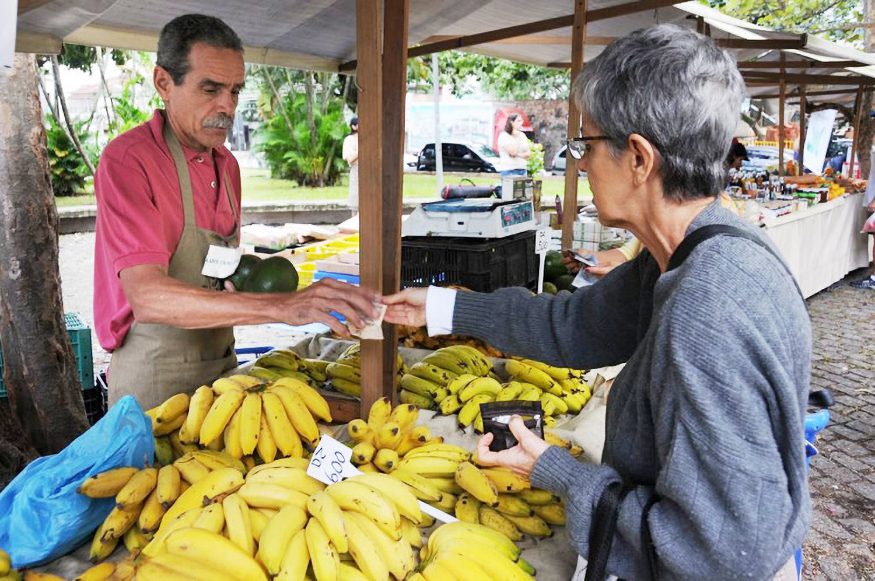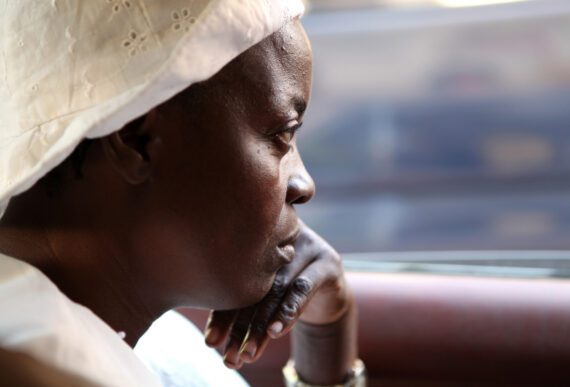By Todd Post
Bread for the World has always emphasized that our mission of ending hunger is not an impossible dream, but something that the people of the world are quite capable of accomplishing.
That said, there is absolutely no doubt that 2020 was an extremely difficult year for people living with hunger or on the verge of hunger. According to the U.N. Food and Agriculture Organization (FAO), as many as 161 million additional people were added to the total number living with hunger–the largest annual increase in decades.
This is not surprising. Large parts of the global economy simply shut down, and billions of people stayed home to prevent further spread of the COVID-19 virus. In low-resource communities in particular, but also in neighborhoods all over the world, many people were unable to earn enough to feed themselves and their children. Even before the pandemic, global hunger rates had been rising slowly for the past several years, following decades of steady progress.
This is not the kind of news anyone would want to hear when seeking motivation to continue efforts to end hunger. When I write about ending hunger, I always expect many people to be skeptical. It’s easy to understand why they might be. Just one of many reasons is that people are much more likely to hear about hunger crises than they are to hear about slow, steady progress in reducing hunger. Both stories are valid, but sudden events are much easier to report than trends.
Political will is the critical factor determining whether or not hunger becomes a problem of the past. One important step in building political will was the adoption in 2015 of the 17 Sustainable Development Goals (SDGs) by virtually every country in the world, including the United States. The goals include ending hunger and all forms of malnutrition by 2030.
The SDGs were adopted when the Millennium Development Goals (MDGs), an earlier significant step forward, expired at the end of 2015. The MDGs called for cutting global poverty and global hunger in half, using 1990 as a baseline. The poverty goal was met five years ahead of schedule, in 2010. Did you notice this being widely reported at the time? Very likely, you didn’t, which is what I mean about media coverage of crises outweighing coverage of progress. The hunger goal was also met, and because the MDGs galvanized public support around the world, there was strong enough political will to set an ambitious SDG agenda.
COVID-19 is setting the world back on all the SDGs, but the reversals do not have to be permanent. Even if the virus is here to stay, as some experts now project, COVID-19 and its variants will not spread at pandemic rates indefinitely. It goes without saying that the pandemic has caused untold death and suffering, both directly and indirectly. But this is not its entire legacy. The development of mRNA vaccines at an unprecedented speed has the potential to jump-start the search for effective treatments for other diseases, perhaps including even cures for cancer. Research made possible by pandemic-era investments may in the end contribute more than expected to improvements in global health.
This happened even in the case of World War II, the most destructive war in human history. The war effort produced breakthroughs in science and technology that were then adapted for peaceful purposes. The horrors of the war also built the political will to establish global institutions, including the United Nations, that have since made important contributions to progress against hunger and malnutrition.
Ending hunger is often assumed to be simply too expensive. In reality, it is well within our financial reach. The International Food Policy and Research Institute (IFPRI), one of the foremost authorities on global food security, estimated that ending hunger by 2030 would cost a maximum of $265 billion per year. That certainly sounds like a lot of money, but it’s important to note the context. The global gross domestic product in 2020 was more than $85 trillion. This means that ending hunger would cost about three one-thousands of one percent of global GDP, “translating” to about $1 of every $321 in global GDP.
Bread activists and others are concerned that even though evidence shows that the world could end hunger with a tiny fraction of its GDP, decision makers may still not do what is needed to accomplish it. That is why Bread prioritizes educating and persuading U.S. government leaders to take action against malnutrition and hunger.
Ultimately, it is even more important to establish a sustainable plan to steadily reduce hunger and malnutrition than it is to meet the 2030 goal. Once the right institutional frameworks and policies are in place, countries could continue making progress after 2030. Hunger could end in 2032 or 2035. Many countries found during the MDG era that just setting a deadline generated faster progress than there would otherwise have been. Without a deadline, there is little sense of urgency and little incentive for policymakers to make the changes needed or for voters to hold them accountable.
The remainder of 2021 offers several opportunities to build the political will needed to end hunger and all forms of malnutrition, and, in addition, to build or adapt global and national institutions to remedy the many weaknesses and gaps uncovered by the pandemic. The U.N. Food Systems Summit takes place September 23, followed by the U.N. Climate Change Conference in November and the Nutrition for Growth Summit in December. All of these could become major milestones along the way to faster progress against hunger and malnutrition, even in the face of a global pandemic.
Todd Post is senior researcher, writer, and editor with Bread for the World.



